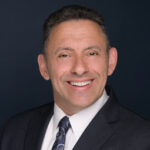Residential building fires can have devastating consequences, resulting in property damage, injuries, and even fatalities. In New York, like in any other place, these fires can be caused by various factors.
Understanding the common causes of residential fires, such as heating systems, cooking equipment, etc., helps to prevent residential fires and take safety measures. By addressing these leading causes of residential fires, we can significantly reduce the number of fire-related incidents in New York.
Between 2016 and 2020, U.S. fire departments attended to an average of 350,800 home structure fires annually, resulting in 2,708 civilian deaths, 11,320 civilian fire injuries, and $7.3 billion in direct property damage yearly. [1]
1. Appliances and Electronics
Potential hazards when handling appliances and electronics in residential buildings include the risk of electrical fires from faulty appliances and the danger of heating appliances being placed near flammable materials.
To prevent these hazards, maintain and supervise electrical equipment regularly. This includes checking for frayed or damaged cords, ensuring all outlets and wiring are in good condition, and keeping heating appliances away from combustible materials.
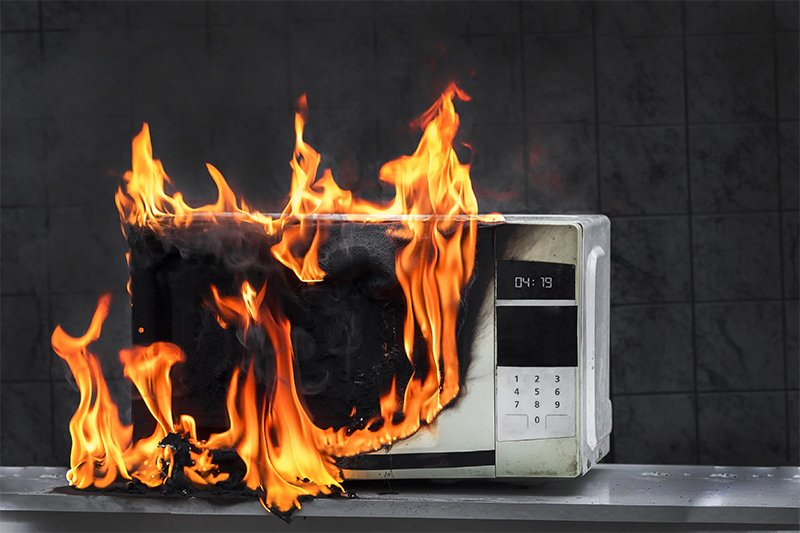
2. Arson
Arson addresses the deliberate setting of fires, which can have devastating consequences for individuals and other family members. Arson can be motivated by a variety of factors, including vandalism, revenge, or financial gain.
Signs of arson can consist of multiple points of origin, the presence of accelerants, and unusual burn patterns.
Report potential arson to local authorities, as the consequences of deliberate fires can be severe, resulting in injury, loss of property, and even loss of life. By staying informed and vigilant, individuals can prevent deliberate fires.
3. Candles
Although candles create a warm and cozy atmosphere, they also pose potential dangers if not used carefully. Candles are involved in 7% of total home fires annually, resulting in an average of 316 deaths. [1] The peak months for candle fires are December, January, and February, likely due to increased use during the holiday season.
To ensure candle safety, always keep them at least 12 inches away from anything flammable, such as curtains, decorations, and furniture. Don’t leave a burning candle unattended; always extinguish it before leaving a room or going to sleep.
Consider using flameless luminaries or LED candles as a safer alternative for decorative lighting. They still provide a warm ambiance without the risk of an open flame and always keep candles out of reach of children and pets to prevent accidental fires or injuries.

4. Children Playing with Fire
Address the issue of children playing with fire by educating them about fire safety and the dangers of playing with fire and respecting it. Set clear rules about matches and lighters, emphasizing that they are safe tools for adults.
Encourage open communication and exploration of emotions to help children express their feelings and curiosity in healthier ways. Be alert to signs of fire play, such as finding matches or lighters in their possession, and address these signs immediately.
5. Cooking Equipment
The leading cause of deadly house fires is cooking fires, comprising 49% of total home structure fires during 2016-2020. [1] When using cooking equipment, adhere to proper safety measures to prevent accidents and fires in the kitchen. Always stay in the kitchen while cooking to address any potential issues that may arise quickly.
Be cautious of overheating, especially with appliances such as stovetops and ovens, to avoid the risk of fires. Use splatter guards and oven mitts to protect yourself from hot oil or food splattering.
To prevent kitchen fires caused by cooking equipment, keep flammable items such as kitchen towels and wooden utensils away from heat sources. Regularly clean stove burners and ovens to remove food debris and grease build-up, which can easily ignite and cause a fire.
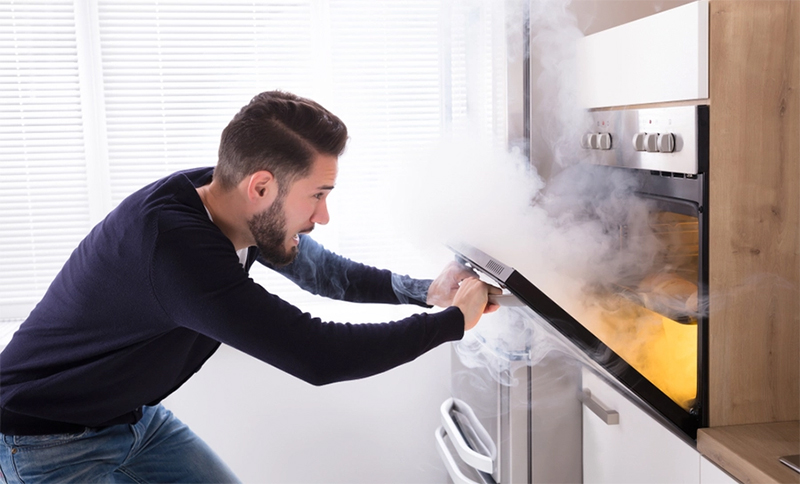
6. Decorations
When it comes to Christmas decorations, safety should be a top priority. Keep decorations away from heat sources such as candles, fireplaces, and heaters to prevent the risk of fire. Check Christmas lights before use to ensure there are no frayed wires or broken bulbs that could potentially cause a fire hazard.
Ensure that decorations do not block or obstruct emergency exits in case of any unforeseen situations. Use flame-resistant or non-flammable decorations to reduce the risk of fire. When using extension cords for lights and other decorations, make sure they are properly rated for outdoor use if being used outdoors, and avoid overloading them.
7. Electrical Equipment
To ensure the safety of your electrical appliances, check for loose or frayed cords and plugs regularly. Any damaged cables or plugs should be replaced immediately to prevent electrical hazards.
Avoid overloading outlets by using power strips with built-in surge protection and being mindful of the number of devices plugged into each outlet. Running electrical wires under rugs or furniture can also pose a safety risk, so keeping them exposed and organized is best.
The overuse of extension cords can lead to overheating and fire hazards. Instead, opt for installing additional outlets where needed. It’s also important to have Arc Fault Circuit Interrupters (AFCIs) installed at your home. That circuit breaker is designed to cut off the circuit upon detecting the electrical arcs associated with loose connections in household wiring. [2]
Use a two-tiered surge protection system to protect your home from power surges. It includes a primary surge protector at the main electrical panel and secondary surge protectors at outlets or power strips. It safeguards your electrical equipment from damage caused by sudden voltage spikes.
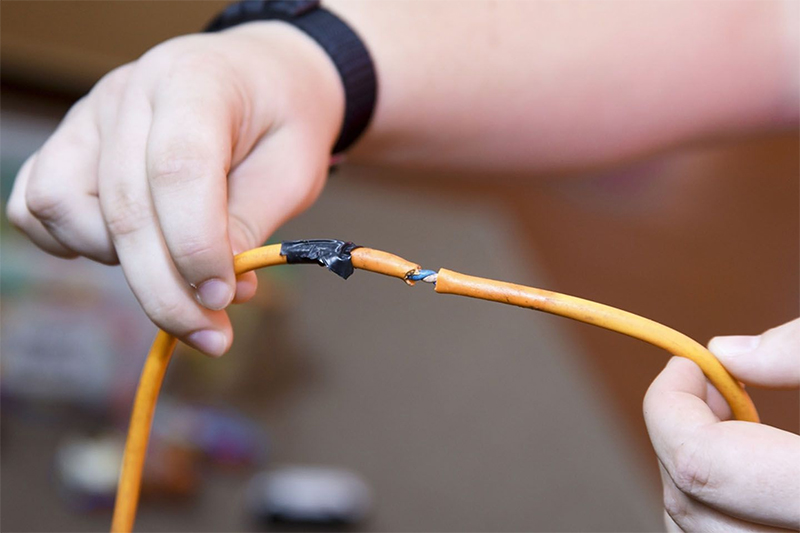
8. Flammable Liquids
When handling flammable liquids, take proper precautions to ensure safety. These liquids should be stored in approved, well-ventilated containers in a cool, dry area away from heat, sparks, and open flames.
When handling these liquids, use appropriate personal protective equipment, such as safety goggles and gloves. Proper handling procedures should be followed, including minimizing the risk of spills and leaks using funnels and drip pans.
Potential dangers associated with flammable liquids include fire and explosion hazards. To prevent accidents and fires, it is essential to never smoke or use open flames near flammable liquids.
9. Heating Systems
Heating equipment is the second most common cause of house fires and injuries. [1] Several types of heating systems are commonly used in residential buildings, including furnaces, space heaters, wood stoves, and more. Each type of heating system comes with its own set of potential hazards.
Furnaces can pose a risk of carbon monoxide leaks if not properly maintained, while space heaters can be a fire hazard if placed too close to flammable materials. Wood stoves also carry the risk of fire if not used and maintained correctly.
To safely use and maintain these heating systems, have them inspected regularly by a professional. Ensure proper ventilation for furnaces and wood stoves, install smoke and carbon monoxide detectors in key areas, and check the batteries regularly to prevent fires.
Having a fire extinguisher on hand is also crucial, as is never leaving any heating system unattended. These safety measures can help ensure a warm home environment during the colder months.
10. Smoking Materials
Proper handling and disposal of smoking materials significantly reduce the risk of house fires. Always use a deep and sturdy ashtray to extinguish cigarettes, and never throw them into the trash can or yard where they can easily ignite a fire.
Instead of stomping on a cigarette to put it out, use water or sand to completely extinguish the embers. Keeping lighters and matches out of reach of children is essential for fire prevention and child safety. Store them securely or use child-proof mechanisms to prevent accidental fires.
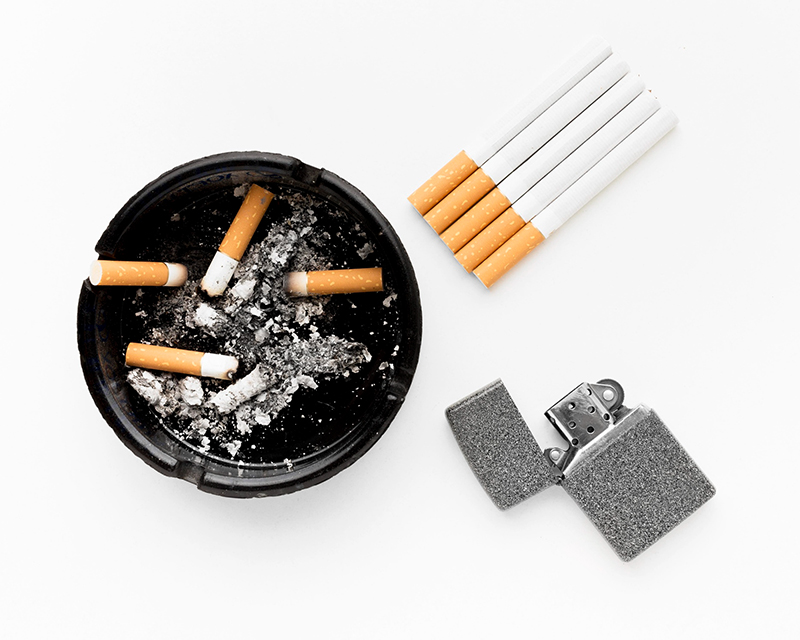
The Dangers of Residential Fires
The dangers associated with residential fires are significant and can include:
- Financial consequences
- Homelessness
- Loss of lives
- Property damage
- Psychological impact
- Severe injuries
- Smoke inhalation
Fire Safety Tips to Prevent Residential Fires
Implementing the following fire safety precautions can help you reduce the risk of home structure fires:
- Avoid overloading electrical outlets or faulty wiring
- Install a fire extinguisher
- Install smoke alarms
- Keep flammable objects away from open flames and heat sources
- Keep matches and lighters out of the reach of children
- Keep portable heaters away from flammable materials
- Make sure grills are used outdoors and away from the home
- Practice safe cooking habits
- Regularly maintain and clean chimneys, fireplaces, and heating systems
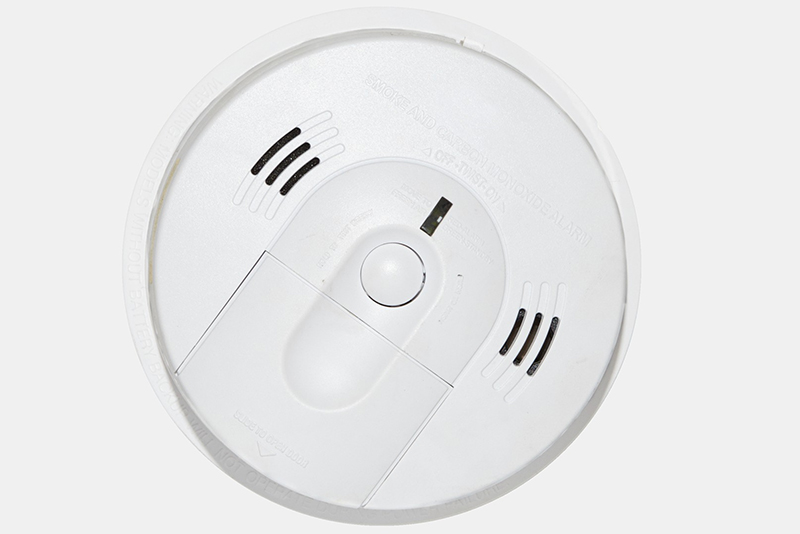
Goldberg & Loren provides legal assistance for burn victims in New York. If you have been involved in a residential fire, please book a free consultation with our personal injury lawyers in New York.
Sources:
[1] Arc-fault circuit interrupter. (2023, November 16). Wikipedia. https://en.wikipedia.org/wiki/Arc-fault_circuit_interrupter
[2] (n.d.). House Structure Fires. NFPA Research. Retrieved December 13, 2023, from https://www.nfpa.org/education-and-research/research/nfpa-research/fire-statistical-reports/home-structure-fires?l=1149
